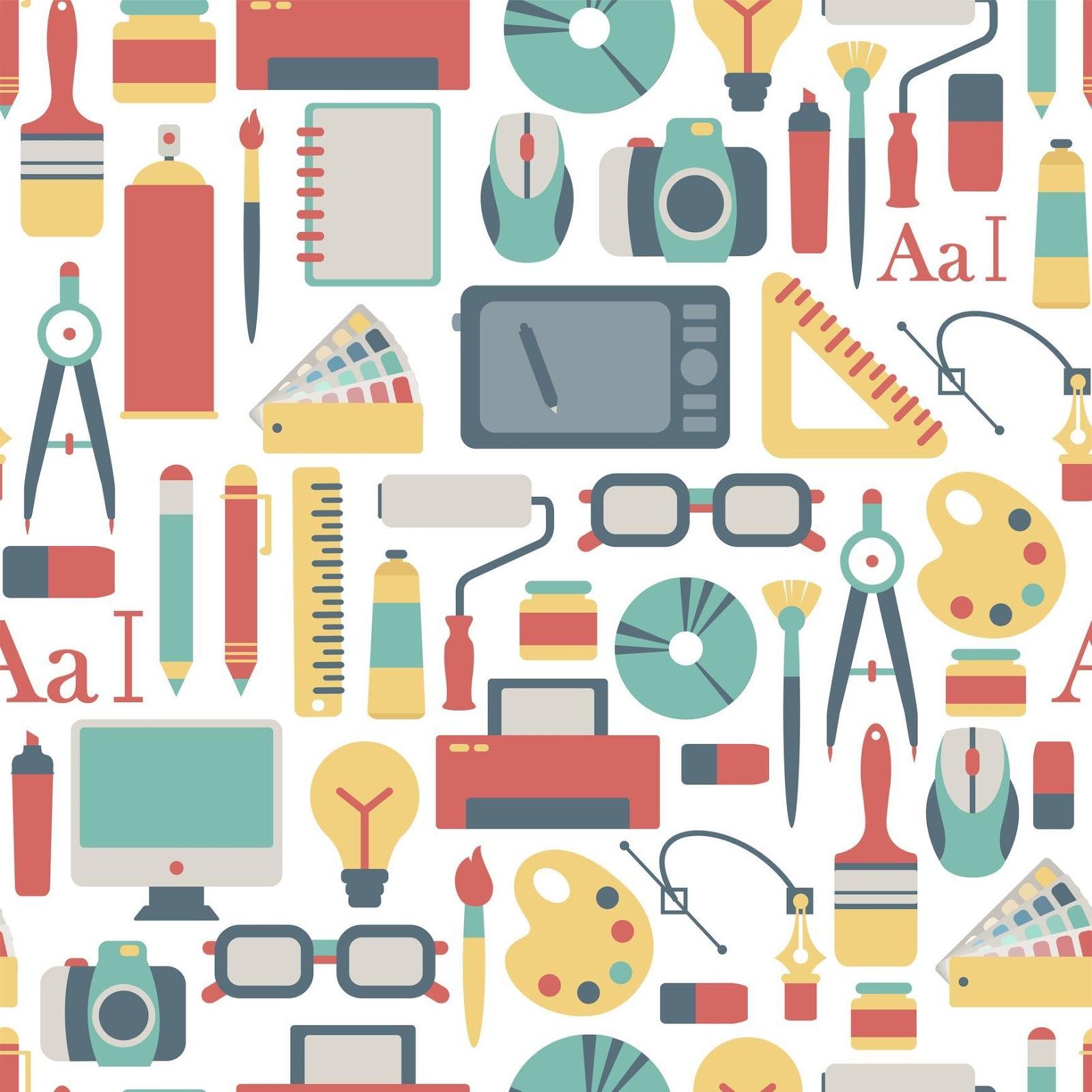Avoid the Top 7 Mistakes That Graphics Design Beginners Do

Index Of The Blog
Mistakes That Graphics Design Beginners Do
With the expansion of the internet, the improvement of mobile devices, and the sheer accessibility of media creating visual content to communicate messages has become a very lucrative career. We are, of course, referring to graphic design, one of the creative industry verticals with the most rapid growth in recorded history. If we consult statistics, this trend becomes more obvious. Mistakes That Graphics Design Beginners Do.
For instance, the growth of the graphic design industry has been stable at 7% for a couple of years now. On top of that, out of 1,500 small businesses, 49% said that graphic design is vital for business success. One-third of these businesses hired an in-house graphic designer. A somewhat lower number decided to outsource graphic design to freelancers.
All of this makes graphic design one of the most wanted careers to pursue. To help you out, we have pulled together a guide on how to avoid the top 7 mistakes that graphics design beginners tend to make.
Who Needs a Plan?
Yes, graphic design is a creative process, and this often confuses graphic designers making them think that they don’t need a plan. This common pitfall has many implications for designers. Quite often, they have to come back to rework the design elements because they don’t fit in the predefined layout. Clients can also be unhappy, requiring a lot of work to be redone.
The plan gives the graphic design process a much-needed structure. The answers to all the whys and when making the workflow much easier to manage. At the same time, a plan will help the designers deliver products before the deadline and leave a good impression on clients. Mistakes That Graphics Design Beginners Do.
Client’s Goals Come Second
Another common mistake we would like you to pay attention to is neglecting the client’s goals. Again, this is a creative process, and you will probably be under the impression that your personal preferences will deliver better results for your clients, but that’s not how they see it.
This especially applies to those situations when you want to push in the latest trends in your design while your clients seek an old-school fail-proof solution.
What should you do? You should communicate with your clients and tell them your opinion. If you don’t get heard, you should abandon your personal goals and stick to the original plan.
Choosing Beauty over Ease of Use and Font Readability
Some graphic designers think that only a beautiful design is good design. Unfortunately, this is not true. The major trends today are ease of use and user experience. Unfortunately, no matter how beautiful, some design can confuse and fail at conveying the desired message to your clients’ audience.
The same applies to typefaces. Are you aware that the global mobile population amounts to 3.7 billion users? Your designs, as well as the fonts you’ve used, will be viewed on devices of various sizes. You have to make sure that design consistency remains true across all of them.
Scaling Elements of Design at Will
Our eyes and brains are hardwired to look for structure, and once we identify it, there is the expectation that we will see it again at the same place. Marketing agencies leverage this to attract attention and inspire engagement. Unless you are specifically told to do this, don’t do it. Otherwise, you will compromise the goals your design is bound to achieve.
Once you start designing, make sure to scale elements in each group properly. For instance, use the same typefaces, icons, color palette, headline, and text size, across your design.
Forgetting to Check for Errors
Graphic designers starting in this line of work often forget to check errors before submitting their work. This is often the consequence of starting without a plan in the first place. Make sure to add the “Checking for errors” phase to your project.
The first thing to check is spelling errors. Then you should proceed with double-checking your design for scaling and coloring oversights. Do it one more time just in case, as it will take significantly less time than dealing with revisions.
Designing Infographics without Data Visualization
The last two mistakes are tied to the use of data in graphic design. The first one is not using data visualization in your designs. Using ugly numbers on a single-color or gradient background is not much of graphic design, you must admit. When the clients ask you to design an infographic, they expect you to illustrate the points.
You have a number of options here. Use graphs and charts to deliver a visual storytelling experience and delight your clients.
Bad Data Resources and Incorrect Data Visualization
There are two additional problems associated with data visualization in graphic design. One is using inadequate data resources in terms of being outdated or just wrong. And the other is making an error when designing.
You can easily avoid this by cross-referencing the client’s data to relevant resources online, and double-checking data visualizations before submitting your files.
5 Steps to Professional Design
- Gather As Much Information As You Can Communicate with your client to find out his exact wishes, expectations, goals, and needs.
- Do Your Research Your research should cover the latest design trends, what are your colleagues doing, and what is your client’s competition doing.
- Devise a Strategy Once you have a plan in front of you, devise a strategy. It should include all the steps you have to take and the tools and resources you will have to use.
- Work on Your Concepts and Presentation Start working on your concepts and develop a few drafts. Present them to your client and acknowledge the feedback.
- Jump to Work In this final step, you should jump to work and bring the design to an end
Conclusion
One of the most prominent professional graphic design companies on the market is Artwork Adobe. AWA’s team of professional graphic designers has helped businesses worldwide expand their brand with outstanding designs and illustrations.













